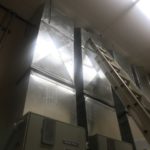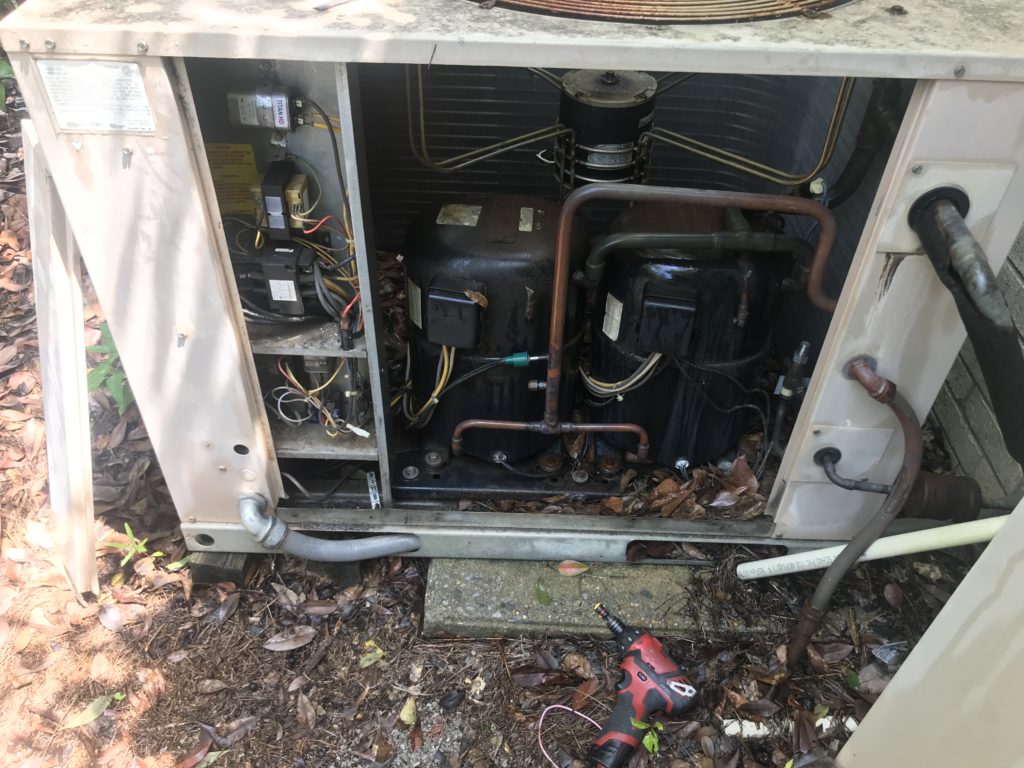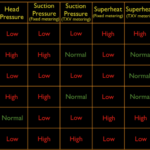I overcharged and undercharged the system by 10%-15% to illustrate the effect on system operating numbers. The result of over/under charge is dependent on the metering device. Since TXVs maintain a constant superheat, overcharge won’t typically affect superheat or suction pressure, which the video confirms. However, if the metering is fixed (piston), you could expect the superheat to decrease and suction pressure to increase if the head pressure increases, due to the increased pressure differential across the piston.
Oftentimes in the field, you see low superheat due to someone overcharging a system to raise the evaporator temperature (pressure) as a stopgap solution for low airflow.
In this particular test, there was a small increase in head pressure (8 psi), significant increase in subcooling (8˚) and virtually no change in suction pressure or superheat.
The undercharge numbers showed decreases in head pressure, suction pressure and subcooling, with an increase in superheat. If the metering was piston, the superheat would probably have gone higher, with the reduced pressure differential across the piston but a TXV will open up in an attempt to maintain the superheat setting. And if a system has a sight glass, a sufficiently low charge will result in bubbles in the liquid line.
Wayne
HeatPumpClinic.viewmonster.com



The beauty of your writing lies not just in its words, but in its ability to evoke deeper emotions and thoughts.
Good shout.
Nice
Nice
snow caps weed area 52
thc gummies for anxiety area 52
best sativa thc edibles area 52
live resin gummies area 52
best sativa thc carts area 52
microdosing edibles area 52
buy pre rolls online area 52
live resin area 52
thc oil area 52
mood thc gummies area 52
live rosin gummies area 52
thc gummies for pain area 52
FB
thc sleep gummies area 52
infused pre rolls area 52
distillate carts area 52
best indica thc weed pens area 52
full spectrum cbd gummies area 52
best disposable vaporizers area 52
magic mushrooms for sale area 52
live resin carts area 52
where to buy thca area 52
thca diamonds area 52
thc tinctures area 52
weed pen area 52
thc gummies
indica gummies area 52
thcv gummies area 52
thca gummies area 52
liquid diamonds area 52
thc pen area 52
best thca flower area 52
thca disposable area 52
hybrid gummies area 52
liquid thc area 52
SY
Google Analytics Alternative